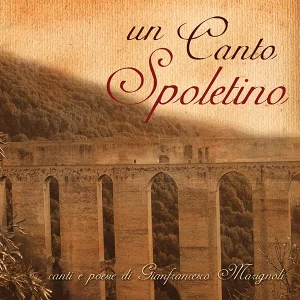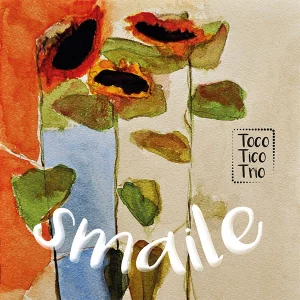El Tiburón
15,00 €
Astor Piazzolla aveva un carattere sanguigno e determinato. Per questo si era appassionato alla pesca allo squalo, attività tutt’altro che rilassante, che anzi mette in circolo scariche di adrenalina. E se pescar un tiburón es un desafío (pescare uno squalo è una sfida), lo è altrettanto, assai ben più avvincente, fare una rivoluzione nel Tango.
Astor Piazzolla had a passionate and determined character. That is why he loved shark fishing, an activity that is nothing but relaxing and, indeed, without doubt would start adrenalin rushes into the bloodstream. And if pescar un tiburón es un desafío (catching a shark is a challenge), it is equally, much more exciting, to make a revolution in the Tango.
Astor Piazzolla aveva un carattere sanguigno e determinato. Per questo si era appassionato alla pesca allo squalo, attività tutt’altro che rilassante, che anzi mette in circolo scariche di adrenalina. E se pescar un tiburón es un desafío (pescare uno squalo è una sfida), lo è altrettanto, assai ben più avvincente, fare una rivoluzione nel Tango. Per fare questo Piazzolla ha messo in gioco tutta la sua determinazione unitamente a una grande capacità di non mollare mai, giacché, in questo percorso di riforma, non sono affatto mancati i momenti difficili. Alla fine c’è riuscito, ha rinnovato il tango ed è diventato un musicista affermato a livello internazionale. Notoriamente il momento di svolta nella sua carriera è stato l’incontro con la grande didatta francese Nadia Boulanger, quindi da questo si può desumere che il processo di riforma piazzollano sia iniziato nel 1955. Proprio in quell’anno mentre si trovava a Puerto Rico per una tournée, gli viene data la notizia della morte di Vincente, suo padre. Astor, per ilarità, aveva sempre deriso la maggior età dei suoi genitori chiamandoli Nonino e Nonina. Rientrato a New York, dopo aver riabbracciato i suoi cari, si chiude in una stanza e scrive di getto il celeberrimo Adiós Nonino. Questo brano vive sul contrasto dei due temi, il primo più severo e regolare basato sul ritmo del tango tradizionale, il secondo più lento e lirico basato su quello che Piazzolla consoliderà come la cellula ritmica del Nuevo Tango, il 3+3+2. Ma dentro Adiós Nonino c’è di più, c’è la contrapposizione tra generazioni, tra stili, tra diversi raggruppamenti timbrici e tra le tante contraddizioni della sua amata Argentina. Nella sua carriera produsse diversi arrangiamenti di questo brano e negli ultimi anni prima della sua morte, questo brano mancava raramente nei suoi concerti. Il corpo centrale di questo disco di Marco Gemelli è costituito proprio da alcune importantissime pagine che Piazzolla ha composto per il Quinteto Nuevo Tango (formazione che era costituita da bandoneon, violino, chitarra elettrica, pianoforte e contrabbasso); dopo il già menzionato Adiós Nonino eccole elencate per anno di composizione: 1962 Muerte del Ángel, 1965 Milonga del Ángel, 1965 Verano porteño, 1969 Otoño porteño, 1970 Invierno porteño e Primavera porteña (pertanto il 1970 è l’anno in cui viene completato il ciclo delle Cuatro estaciones porteñas) e nel 1971 il Concierto para quinteto. I brani Muerte del Ángel e Milonga del Ángel insieme a Introducción del Ángel e la Resurrección del Ángel, costituiscono la cosiddetta Suite dedicata al Ángel. Queste due composizioni generano una incredibile ricchezza di contrasti e elementi contrapposti: grinta contro malinconia, ritmo contro melodia, veemenza contro intimismo. La Muerte del Ángel è celebre per il suo fugato iniziale e per il finale impetuoso; Milonga del Ángel è considerata una delle melodie di andamento lento meglio riuscite tra le composizioni di Piazzolla. L’ammirazione per i grandi compositori della storia sta probabilmente alla base dell’idea di Piazzolla di scrivere quattro brani dedicati alle stagioni. Ma già nel titolo viene palesata la ricchezza di contrasti che costituiscono l’essenza di questi quattro pezzi: se Cuatro estaciones fa pensare al mondo della musica classica, come si aggiunge l’aggettivo porteñas si entra vorticosamente nel mondo del tango e di uno dei suoi elementi che ne costituiscono la cultura: il porto. Un anno dopo arriva ancora una ulteriore pagina ad accrescere la già rilevante mole di lavoro prodotta dal Quinteto: il Concierto para Quinteto, che è dedicato da Piazzolla ai suoi musicisti, ai suoi compagni di oltre 10 anni di intenso lavoro. Cafè 1930 e Nightclub 1960 sono brani tratti dalla raccolta Histoire du Tango originariamente scritta per flauto e chitarra. Fu il Festival della Chitarra di Liegi a commissionare nel 1985 questo lavoro a Piazzolla, il quale volle riservare questa raccolta a questi due strumenti, presenti nelle fasi primordiali dal tango rioplatense attorno al 1880 (in realtà al fianco di altri strumenti come violino e arpa). Cafè 1930 e Nightclub 1960 sono il secondo e terzo brano della serie, preceduti da Bordel 1900 e seguiti da Concert d’aujourd’hui. Cafè 1930 rimanda un po’ al periodo del tango-canción, ovvero il periodo più nostalgico e romantico della storia del tango. Nightclub 1960 richiama in pieno alla trasformazione del tango portata avanti da Piazzolla, con la diffusione ad un pubblico più ampio e anche di livello internazionale. Per concludere viene spontaneo porsi una domanda: è possibile rendere l’essenza della musica di Piazzolla con un organico diverso da quello pensato originariamente dall’autore? Assolutamente sì; le composizioni di Astor Piazzolla si prestano con grande facilità a riadattamenti, arrangiamenti, revisioni, ecc. Certo, per avere dei buoni risultati ci vuole la maestria di chi cura gli arrangiamenti unitamente alla maestria degli esecutori, e, Marco Gemelli con il quartetto d’archi formato da Paolo Angelucci, Kristina Esekova, Stefano Morgione e Alessandro Lumachi hanno dimostrato in modo straordinario la loro capacità di centrare l’essenza della musica di Piazzolla. Per tale ragione il loro lavoro costituisce una meravigliosa rilettura delle pagine proposte, un arricchimento, un rinnovamento… nel rinnovamento. Già perché non dobbiamo dimenticare che il pescatore di squali era un incallito “rinnovatore”.
Astor Piazzolla had a passionate and determined character. That is why he loved shark fishing, an activity that is nothing but relaxing and, indeed, without doubt would start adrenalin rushes into the bloodstream. And if pescar un tiburón es un desafío (catching a shark is a challenge), it is equally, much more exciting, to make a revolution in the Tango. In order to do this, Piazzolla put all his determination at stake, together with the great ability to never give up, although there were difficult moments along the way. In the end he renewed the tango and became an internationally renowned musician. Notoriously, the turning point in his career was his meeting with the great French teacher Nadia Boulanger, so from this we can assume that the process of Piazzolla’s reform began in 1955. Just in that year, while was in Puerto Rico for a tour, he was given the news of the death of Vincente, his father. Out of hilarity, Astor always mocked his parents’ age by calling them Nonino and Nonina. Back in New York, after re-embracing his loved ones, he locked himself in a room and wrote the very famous Adiós Nonino from scratch. This piece is based on the contrast of two themes, the first one which is more severe and regular built on the rhythm of the traditional tango, the second one which is slower and more lyrical built on what Piazzolla would consolidate as the rhythmic cell of the Nuevo Tango, the 3+3+2. But within Adiós Nonino there is much more, there is the contrast among generations, styles, different timbral groupings and the many contradictions of his beloved Argentina. He produced several arrangements of this piece during his career and in the last years before his death, it was rarely missing in his concerts. The main part of this CD by Marco Gemelli is based on some very important pages that Piazzolla composed for the Quinteto Nuevo Tango (formation consisted of bandoneon, violin, electric guitar, piano and double bass); after the already mentioned Adiós Nonino, we can find a list by year of composition: 1962 Muerte del Ángel, 1965 Milonga del Ángel, 1965 Verano porteño, 1969 Otoño porteño, 1970 Invierno porteño and Primavera porteña (1970 is the year in which the cycle of Cuatro estaciones porteñas was completed) and in 1971 Concierto para quinteto. The pieces Muerte del Ángel and Milonga del Ángel with the Introducción del Ángel and Resurrección del Ángel, they make up the so-called Suite dedicated to Ángel. These two compositions generate an incredible wealth of contrasts and opposing elements: grit against melancholy, rhythm against melody, vehemence against intimism. Muerte del Ángel is famous for its opening fugato and impetuous finale; Milonga del Ángel is considered one of the most successful slow-moving melodies among Piazzolla’s compositions. Admiration for the great composers of history is probably behind Piazzolla’s idea of writing four pieces dedicated to the seasons. But the wealth of contrasts constituting the essence of these four pieces is made clear in the title: Cuatro estaciones makes you think of the world of classical music, but as you add the adjective porteñas, you swirlingly enter into the world of Tango and one of its main elements: the port. A year later, yet another page arrived to enrich the already considerable body of work produced by the Quinteto: the Concierto para Quinteto, wich is dedicated by Piazzolla to his musicians, his companions of over 10 years of intense work, many concerts, challenges and trips around the world. Café 1930 and Nightclub 1960 are pieces from the collection Histoire du Tango, originally written for flute and guitar. It was the Liège Guitar Festival that commissioned this work to Piazzolla in 1985. Piazzolla wanted to reserve this collection for these two instruments, which were present in the early stages of the tango around 1880 (actually alongside other instruments such as violin and harp). Cafè 1930 and Nightclub 1960 are the second and third pieces in the series, preceded by Bordel 1900 and followed by Concert d’aujourd’hui. Café 1930 harks back somewhat to the tango-canción period, the most nostalgic and romantic period in the history of Tango. Nightclub 1960 harks totally back to the transformation of Tango brought about by Piazzolla, with its diffusion to a wider and even international audience. To conclude, a question arises: is it possible to render the essence of Piazzolla’s music with an ensemble different from the one originally conceived by the composer? Yes, absolutely! Astor Piazzolla’s compositions lend themselves very easily to re-adaptations, arrangements and revisions. Of course, to get good results, both the arrangers’ and the performers’ skills are required Marco Gemelli with the string quartet formed by Paolo Angelucci, Kristina Esekova, Stefano Morgione and Alessandro Lumachi have masterly demonstrated their ability to capture the essence of Piazzolla’s music. Therefore, their work is a marvellous reinterpretation of the proposed pages, an enrichment, a renewal… in renewal. Yes, it is, because we must not forget that the shark fisherman was an inveterate ‘renewer’.




